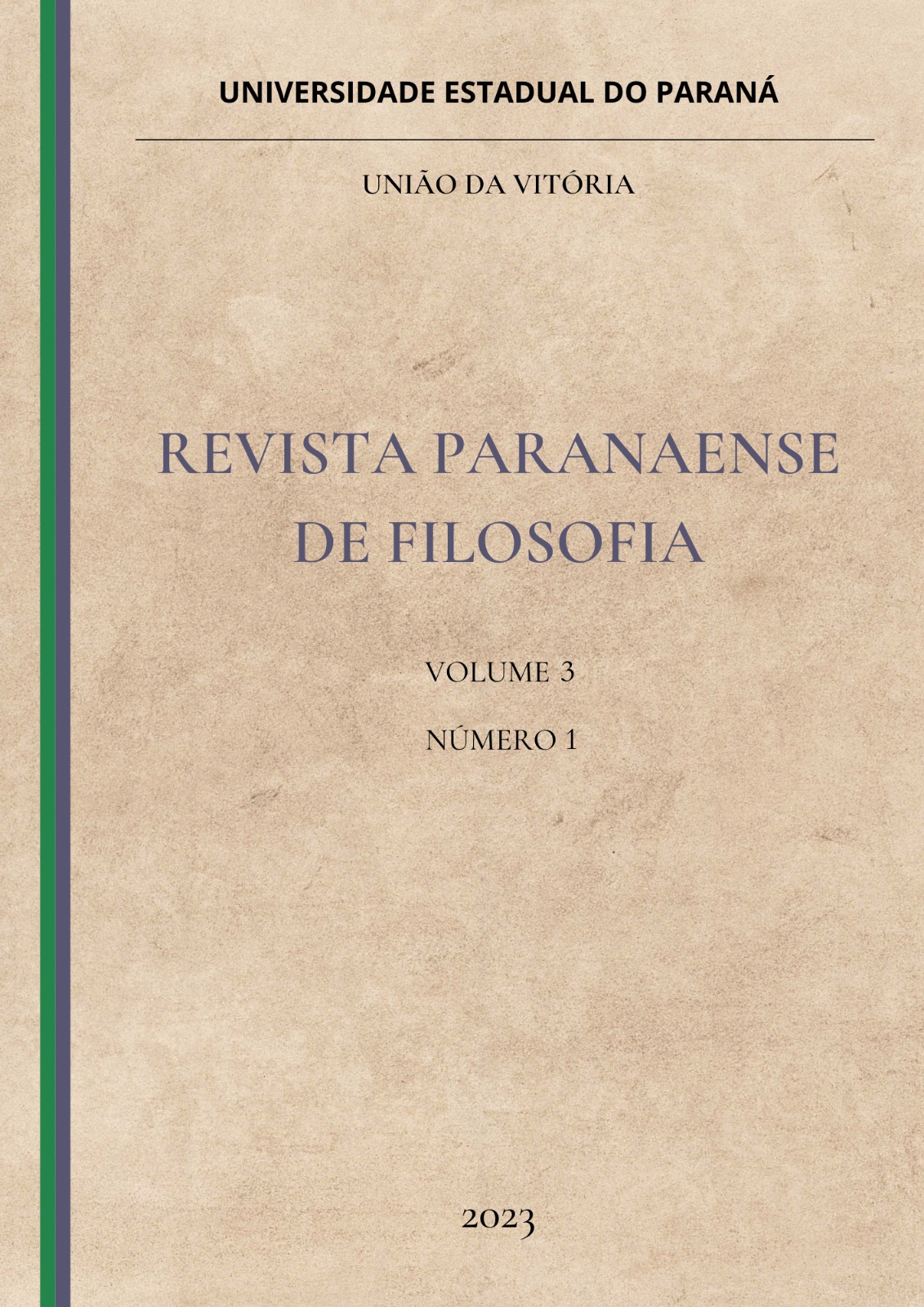VIDA, ARTE E DEVIR
A vida como fenômeno estético em Nietzsche
DOI:
https://doi.org/10.33871/27639657.2023.3.1.7649Palavras-chave:
Arte, Devir, Vida, Dionisiaco, ApolineoResumo
Este artigo busca justificar, a partir de O Nascimento da Tragédia, a famosa frase de Nietzsche que diz: “só como fenômeno estético a existência e o mundo justificam-se eternamente”. Nesse sentido, traçaremos um caminho com dois momentos: 1) a exposição dos princípios apolíneo e dionisíaco como impulsos naturais criadores da arte trágica. Este primeiro momento traz a importância de se compreender o movimento antagônico e conciliador que envolve tais princípios, bem como demonstrar que os gregos criaram a tragédia com objetivo de suportar os horrores da vida; o segundo momento traça um parâmetro comparativo entre os conceitos nietzschianos de a vida, a arte e o devir. Pretendemos com isso, dizer que a vida é, para Nietzsche, devir, e o que confirma tal proposição é o próprio modo em que Nietzsche vê a vida: como uma luta entre forças opostas, ou seja: como vontade de poder. Assim, o devir seria o que, também, definiria o movimento da arte através da dinâmica alternante dos impulsos apolíneo e dionisíaco.
Downloads
Referências
AMORIM, Wellington Lima.; DO NASCIMENTO, Valter. VIDA E SOFRIMENTO EM NIETZSCHE. Revista Húmus, [S. l.], v. 6, n. 18, 2017. Disponível em: https://periodicoseletronicos.ufma.br/index.php/revistahumus/article/view/6330. Acesso em: 4 jan. 2023.
BARRETO, Ana Cláudia Gama. Sobre o “conceito” de vida no Nascimento da Tragédia. TRÁGICA: Estudos de Filosofia da Imanência, v. 4, n. 2, 2011.
CASTRO, Cláudia Maria de. A inversão da verdade: notas sobre O nascimento da tragédia. Kriterion: Revista de Filosofia, v. 49, p. 127-142, 2008.
DELEUZE, G. Nietzsche. Trad. De Alberto Campos. Lisboa: Edições 70, 1994.
DIAS, Rosa Maria. Arte e vida no pensamento de Nietzsche. Cadernos Nietzsche, v. 36, p. 227-244, 2015.
MACEDO, Iracema. Nietzsche, Bayreuth e a época trágica dos gregos. Kriterion: Revista de Filosofia, v. 46, p. 283-292, 2005.
MACHADO, Roberto (Ed.). Nietzsche e a polêmica sobre o nascimento da tragédia. Zahar, 2005.
PASCHOAL, Antonio Edmilson. A dinâmica da vontade de poder como proposição moral nos escritos de Nietzsche. Campinas: Unicamp, 1999.
PEREIRA, Camilo Lelis Jota. Nietzsche e a fisiologia da arte. Cadernos Nietzsche, v. 36, p. 177-200, 2015.
NIETZSCHE, Friedrich. A visão dionisíaca do mundo. São Paulo: Martins, 2005.
_____, Nascimento da Tragédia ou Helenismo e Pessimismo. Trad. J. Guinsburg. São Paulo: Companhia das Letras, 1992.
______, Friedrich. Assim falava Zaratustra. Nova Fronteira, 2011.
SANTOS, Maria Carolina Alves dos. A lição de Heráclito. Trans/Form/Ação, v. 13, p. 01-09, 1990.
WEBER, José Fernandes. A teoria nietzscheana da tragédia. Trans/Form/Ação, v. 30, p. 205-223, 2007.
Downloads
Publicado
Como Citar
Edição
Seção
Licença
Copyright (c) 2023 Revista Paranaense de Filosofia

Este trabalho está licenciado sob uma licença Creative Commons Attribution 4.0 International License.
Artigo publicado em acesso aberto sob a licença Creative Commons Attribuition 4.0 International Licence.
Os autores cedem o direito exclusivo de primeira publicação à Revista, sendo o trabalho licenciado simultaneamente sob a licença Creative Commons Attribution 4.0 International (CC BY). Esta licença permite que terceiros remixem, adaptem e criem a partir do trabalho publicado, atribuindo o devido crédito de autoria e publicação inicial neste periódico. Os autores têm autorização para assumir contratos adicionais separadamente, para distribuição não exclusiva da versão do trabalho publicada neste periódico (por exemplo: publicar em repositório institucional, em site pessoal, publicar uma tradução ou como capítulo de livro), com reconhecimento de autoria e publicação inicial neste periódico.



